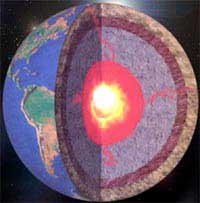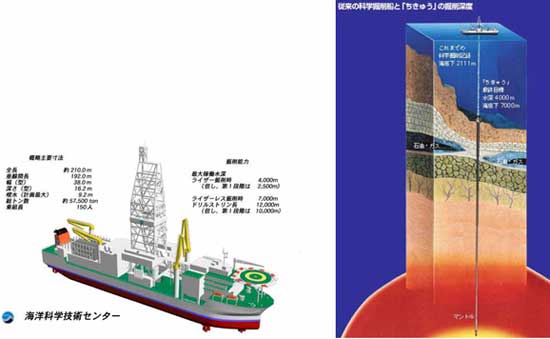Millennium project - traveling through the earth

LBL
50 years ago, when the Americans took the first step on the moon, it was also the geological scientists embarked on the "Reverse Apollo Project" - going through the earth to learn about the common home of humankind.
So far, the most modern drills of human civilization have only scratched the first stratigraphic surface of the earth's crust with a depth of about 2.5 km. The Japanese claimed they had overcome the technical limit to be able to bring the drill down to a depth of 7 km. This success has brought together hundreds of international scientists from Japan, the US, China and other 15 countries to converge in a century-old " Travel through the Earth " project.
The means for this great journey is that the Tikiu ship has the ability to drill deep into the earth a depth of 3 times more than the most modern drilling platforms in the world currently used.
The role of the Japanese in this project is similar to that of the Americans in the international space station, because in addition to the goals that other countries are pursuing, they aspire to know what will happen in the land. Funeral in the nearest and most distant future.
Japan is currently on the intersection of the four most dangerous stratigraphic slides in the world - which attracts up to 20% of global earthquakes. Tokyo is the most dangerous city on the planet because it is located in the most unstable strata with earthquakes appearing suddenly and continuously.

As planned in September 2007, the Tikiu will carry out its first drill in the Pacific Ocean, 600 kilometers southwest of Tokyo. This is a seismic hot spot and there are frequent earthquakes of up to 8 on the Richter scale. Next, Tikiu will carry out a second drill in Indonesia's Sumatra Sea, where a tsunami outbreak last year caused a catastrophe for a number of Southeast Asian countries.
Even though people in this decade only went deep into the earth for about a kilometer, the information collected in such layers of strata also helps people understand where the life we have today comes from. Why do we have only one moon, why dinosaurs and mammoths are extinct, and many other questions. The first steps like that down to the ground are small but it is an indispensable starting point for the descendants to continue to come along with the journey of the heart of the earth.
- Video: See the Millennium Falcon spaceship in real life
- Things to remember before traveling
- 2008 Millennium Technology Award for Americans
- 506 million-year-old monster in the quarry is like ... spaceship
- NASA: The millennium challenges
- Why does the Millennium Bridge shake?
- Announced 4 inventions won the 2008 Millennium Technology Award
- Risks from carbon dioxide in the next millennium
- The self-declared man died 17 years ago, traveling time to 2018?
- It sounds crazy, but this hundred billion dollar project could save the Earth
- Millennium Camera: camera exposed for 1,000 years to record climate change
- The video illustrates the scene of Nibiru stabbing the earth
 Vietnam 5th Asian champion on fuel-efficient vehicles
Vietnam 5th Asian champion on fuel-efficient vehicles We can read all NASA studies completely free of charge
We can read all NASA studies completely free of charge Singer and songwriter Bob Dylan won the 2016 Nobel Prize for Literature
Singer and songwriter Bob Dylan won the 2016 Nobel Prize for Literature Scientific revolution in Asia
Scientific revolution in Asia Amazing discovery of 4.5 billion year old alien ocean of life
Amazing discovery of 4.5 billion year old alien ocean of life  What would happen if you dug a hole through the Earth and jumped in?
What would happen if you dug a hole through the Earth and jumped in?  Chilling discovery of cosmic object that almost brought the Earth to 'apocalypse'
Chilling discovery of cosmic object that almost brought the Earth to 'apocalypse'  The Sun goes into hibernation, will the Earth usher in a new ice age?
The Sun goes into hibernation, will the Earth usher in a new ice age?  Discovery of space object powerful enough to tear apart the Earth
Discovery of space object powerful enough to tear apart the Earth  NASA to test 'pneumatic brakes' for Mars lander
NASA to test 'pneumatic brakes' for Mars lander 